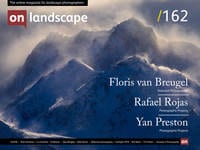Can it be captured & if so how?

Keith Beven
Keith Beven is Emeritus Professor of Hydrology at Lancaster University where he has worked for over 30 years. He has published many academic papers and books on the study and computer modelling of hydrological processes. Since the 1990s he has used mostly 120 film cameras, from 6x6 to 6x17, and more recently Fuji X cameras when travelling light. He has recently produced a second book of images of water called “Panta Rhei – Everything Flows” in support of the charity WaterAid that can be ordered from his website.
Rereading my last article for On Landscape on The Impact of Photography on Impressionism, I was struck by a thought relating to the idea of the essence of place. I wrote there:
One of the features of a successful landscape photograph is that it seems to capture some essential feeling of place. We can often recognize this in a photograph, even if it is of a place we do not know well. As landscape photographers we will often endeavour to encapsulate that essence – the atmosphere, spirit or soul of the place, and our feelings towards it – in a single still image, even if that image is not necessarily as the scene appeared to the photographer in reality.
I have been fortunate to have taken pictures in Mallerstang, the headwater valley of the Cumbrian River Eden, for the last 20 years, albeit as an “off-comer”. So the thought was: what does it mean to have captured the essence of a particular place like this one?
Mallerstang, also known locally as the Magic Valley, lies between Wild Boar Fell to the west and Mallerstang Edge to the east and was made part of the Yorkshire Dales National Park in 2016 (although it has never been in Yorkshire, and before the formation of Cumbria in 1974 was part of Westmoreland). At the head of the valley you can stand on the three way drainage divide between the Eden, which flows north to Carlisle and the Solway firth; the Lune which flows south and west to Lancaster and Morecambe Bay; and the Ure, which flows east down Wensleydale to the Ouse, Humber Estuary and North Sea. It shares the geology of the Yorkshire Dales, with carboniferous limestones, gritstones and shales, but runs north-south rather than east-west, and the geology has been subject to a bit more faulting than some of the other Dales.

